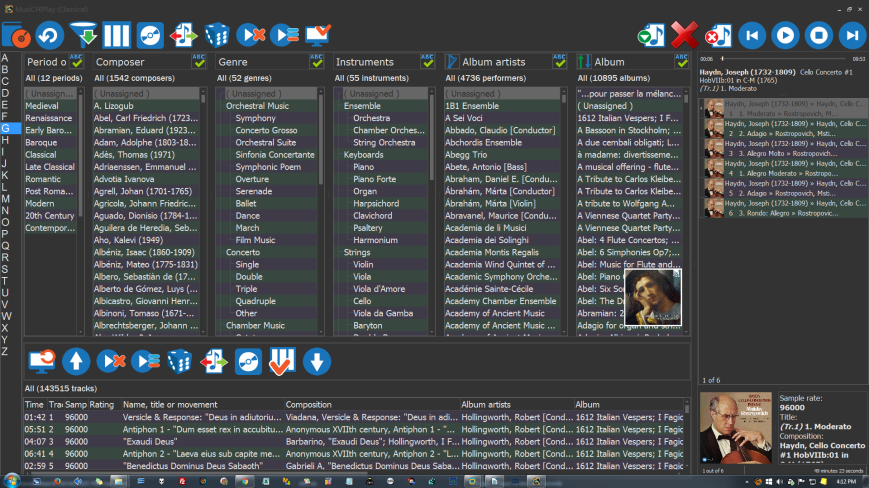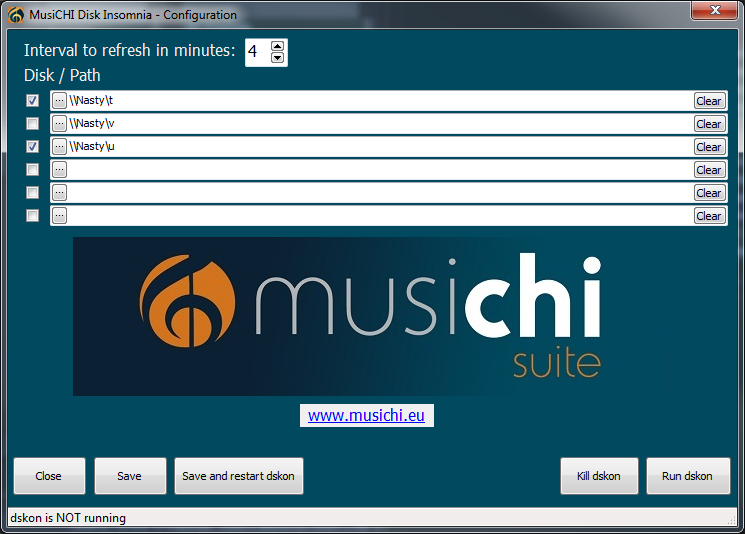DSF Support
We have added a this new format (DSF) across the entire MusiCHI Suite, the tagging model is the same as the mp3’s (Id3v2). As in all other MusiCHI formats, the meta-data will be stored 100% inside the audio file.
As DSD is a bit of a hack, when a PC is used as a source, you will have to see with your DAC, what settings are the most appropriate for listening. Our tests showed that either “on the fly DSD-to-PCM conversion” or the DSD-over-PCM (05/FA markers) with WASAPI and RAM playing was the best way to go; Depending on the DAC driver one can play DSD64, DSD128.
To configure: Menu > Settings > Output > DSF >
Note: If you are just upgrading, you should run C:\Program Files (x86)\MusiCHISuite\bin\AddDSF.exe, it will add the dsf format to the list of scan-able extensions.
New display modes
We decided to add 2 GUI modes to the player,
Simple player mode:
Some people like to use the file system mainly to select their music, or let’s assume a friend gave you a disk full of music and you want to explore it. In both cases there is no need to scan the meta-data into a library, therefore the whole screen space dedicated to searching is useless, hence you can shrink the player to the playing queue only. Menu > File > Mode > Player

Tablet mode:
Because we have a client/server edition of MusiCHI, we decided to modify the client so it can be 100% used with fingers (stylus or mouse) but no keyboard. But if you have a laptop, 2-1 with a touch screen or want to use the mouse only, why not? So we ported all these features from the client version to the local version. Menu > File > Mode > Tablet


In tablet mode automatically, the ruler will pop out on the left. The slider will go, on any column, to the 1st entry of a word starting with the clicked letter. You can use that ruler, also in normal mode. Menu > View > abcdefg….
Improved views
Views were introduced in Sep. 2015 in version 5.0.2, you can read here what they do and how they work:
https://musichieu.wordpress.com/2015/09/15/musichi-new-version-5-0-20-views-and-generic-support-for-external-players/
A power user wanted us to complete the exercise, so we did listen to him: we saved the positions of the playing queue, the font sizes and also the positions and widths of the lower central grid (i.e. the one with the songs). Basically pretty much, ALL screen parameters are saved and retrieved. If you copy your library around on different devices with various screen definitions, you can re-arrange your desktop in no time; or a particular screen arrangement for a special genre or artist.
Disk insomnia
Sometime you want to prevent a disk to fall asleep, else the music might have a hick-up on the next track, so this little application, that you can use as a stand alone as well, and can be freely distributed, does just that. Yet it is integrated in the player. Menu > Settings > Disk insomnia and run the configuration. Insomnia will write an empty file to the disks/folders of your choice very 1-15 minutes. Just fill up the list and check the ones to be active. Then start dskon, an icon will appear on the OS tray. Right-click “exit” will stop it. You can configure the player to have this utility start/stop each time you load the player, Menu > Settings > Disk insomnia check the option Run at startup.

Hi. Maybe is a stupid question but would you please explain how to upgrade from version 5.5.00?
Thanks a lot.
When released it will be semi-automatic – just have your serial # ready
Oh, thanks a lot. I had understood it was already released. Serial # ready 🙂 Thanks again.
No we write this blog always a few days before, it is out, to tell users what to expect